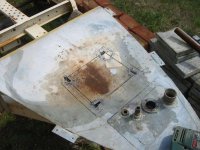dcbullington
Contributing Member
I have a 1966 CC Cavalier Futura with twin 327's. I just had the engines rebuilt and had worked out some kinks. Now my fuel filters are clogging. I drained the tanks during the rebuild as best I could without removing them. Obviously, this is not going to be good enough so I have decided to bite the bullet and take the tanks out.
Here is my question: Should I have the original galvanized tanks refurbished or just replace them with a new tank (tanks)? If I replace, what is the best material, aluminum? One tank or two (they are 75 gal/ea)?
As always, thanks in advance for your advice.
Dave
Here is my question: Should I have the original galvanized tanks refurbished or just replace them with a new tank (tanks)? If I replace, what is the best material, aluminum? One tank or two (they are 75 gal/ea)?
As always, thanks in advance for your advice.
Dave


